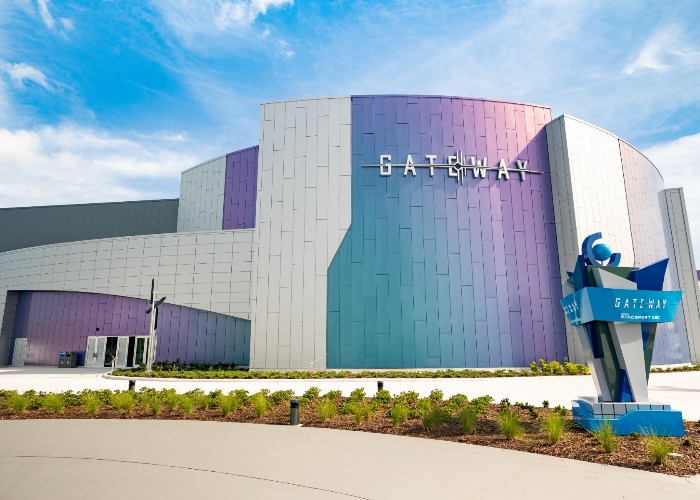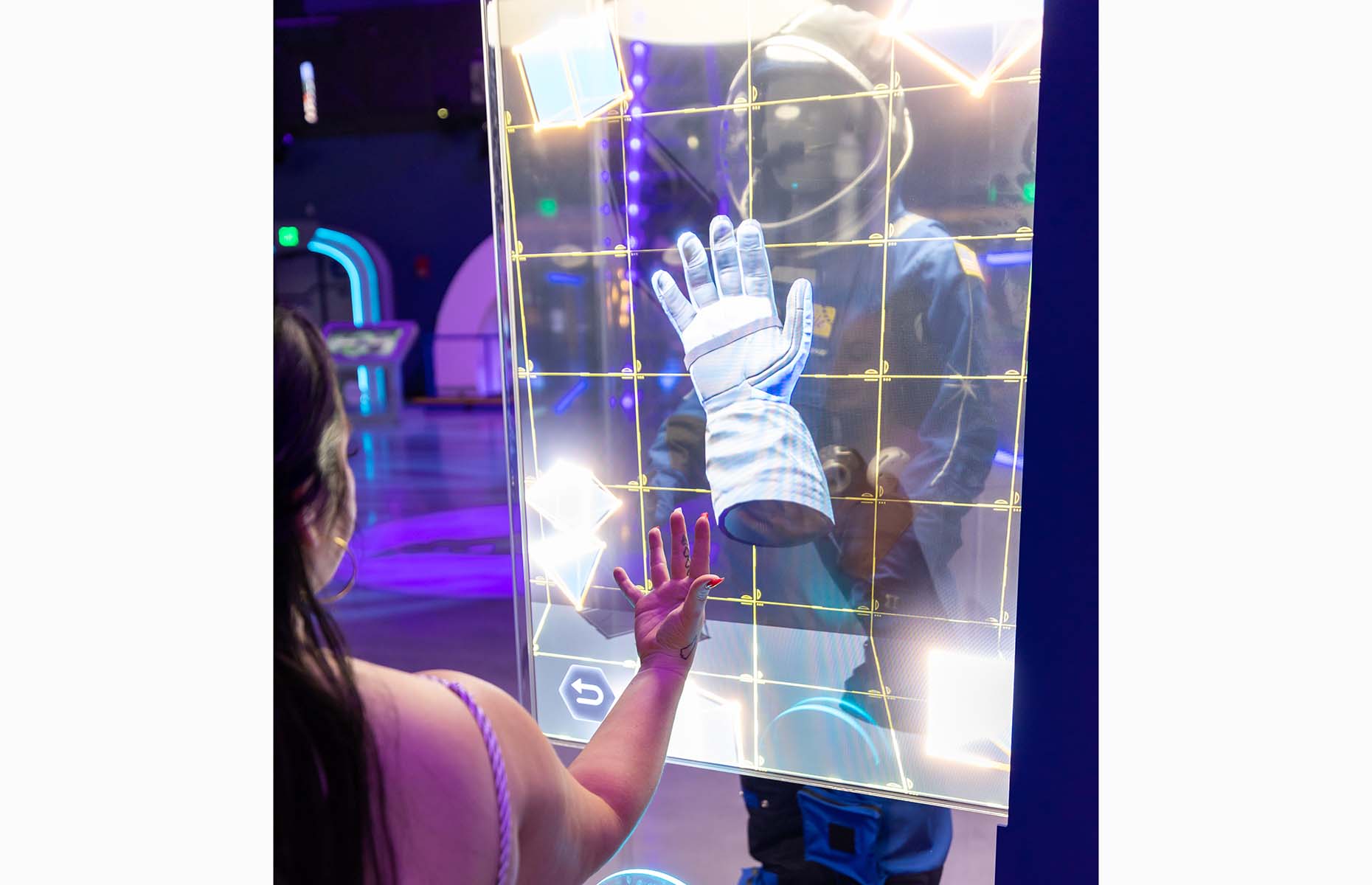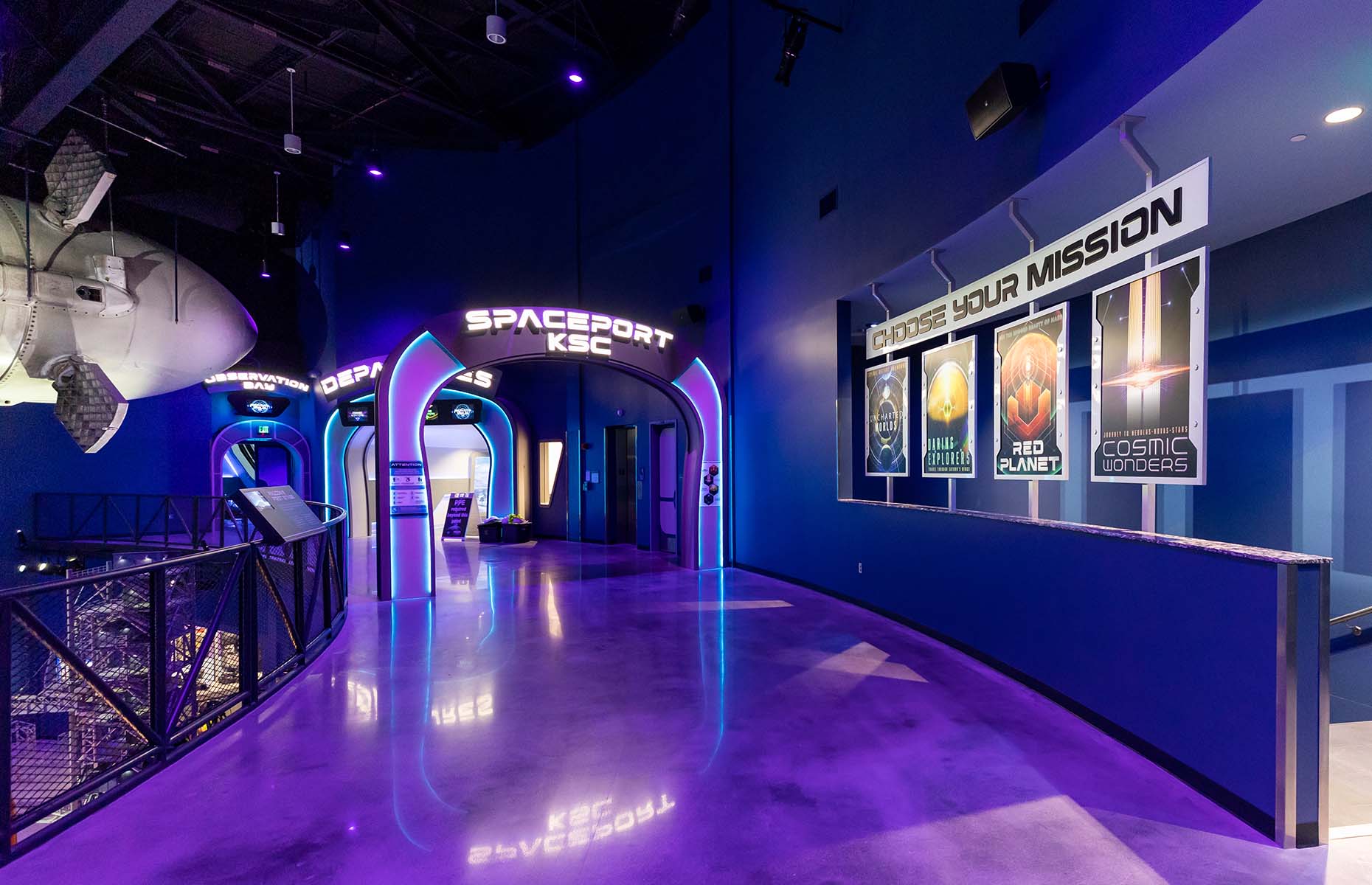Discovering Gateway: The Deep Space Launch Complex on Florida's Space Coast

Florida’s Space Coast has a new galactic must-see attraction – Gateway at the Kennedy Space Center, which offers a fascinating glimpse into the future of space travel.
"Three, two, one…we have lift-off!" The countdown reverberates from enormous loudspeakers as Ground Control shouts the sequence to a large group of assembled bystanders who are hanging onto every number. The countdown before a rocket is catapulted into space is something I vaguely remember from a childhood punctuated by the Space Race, but this is the first time I'm experiencing it in real life.
In readiness for launch, I manage to manoeuvre myself into a viewing position on the lawn behind the visitor compound with only 10 minutes to spare. Surrounded by children, toys and equally enraptured adults, it's clear the interest in rockets is something that cuts through the generations. Take-off for the SpaceX Falcon NileSat is set for 5:00pm Eastern Standard Time and the excitement is palpable.
There is only a very slim chance (about 20%) that a launch will take place as planned as it's often postponed or cancelled, mostly due to poor weather conditions. So, when it blasts off and the delayed roar from the two-stage rocket’s propulsion engines reaches us minutes later, it is partially drowned out by delighted shouts and screams from the crowd.
The supersonic rocket soon emerges into view, with red and white hot flames jettisoning it through the sky. Travelling at a speed of nearly 25,000 miles per hour (40,000km/h), it reaches a certain point in the heavens before curving towards the Atlantic Ocean. Less than five minutes from initial lift off, the first section of the rocket has depleted its fuel and dropped away. The second part, which has its own completely separate propulsion unit, then carries the rocket on into space.
Kennedy Space Center Visitor Complex
READ MORE: South Florida road trip: the top things to do, where to stay & what to eat
Gateway: The Deep Space Launch Complex
I had arrived that afternoon to see the Kennedy Space Center Visitors Complex and its new Gateway: The Deep Space Launch Complex. Recently opened to the public, it's a futuristic exhibit highlighting artefacts and designs that have paved way for human space travel. Anyone remotely interested in space will want to see the current cutting-edge innovations of interstellar exploration and experience the fun and interactive displays.
There is a certain blacklit type of glow about the darkened space. Many of the displays are ringed in goblin green- and purple-lit patterns and inscriptions reminiscent of sci-fi films. If a capsule or a rocket has been on a mission to space, it has a prominent decal saying ‘Flight Flown Artefact’. Often these vehicles will have evidence of re-entry burns and other wear and tear – one of the truly fascinating aspects of this exhibition.
 Kennedy Space Center Visitor Complex
Kennedy Space Center Visitor Complex
While the Kennedy Space Center Visitor Complex highlights the past achievements of NASA’s Mercury, Gemini, Apollo and Space Shuttle programmes, this 50,000-square-foot (46,450sqm) attraction was conceived to be visionary as well as highlighting NASA’s new commercial partnerships. The most prominent display is the Falcon 9 booster which I see in action later. It is suspended from the ceiling to make 360-degree viewing possible and is quite an awesome sight.
Other companies with artefacts on display include SpaceX, the first private company to take humans into space in 2020, and its Cargo Dragon COTS-2. Boeing, now in the space business as well as manufacturing aircraft and airliners, has provided a CST-100 Starliner Spacesuit, CST-100 Starliner Simulator and CST-100 Starline Capsule.
Aerojet Rocketdyne holdings, which created the Saturn V rocket that took the first humans to the Moon, is displaying its RL10 high-performance upper-stage rocket engine. The RL10 has been in use for 50 years and is continuing to carry this rocket’s legacy forward.
As the next generation of space transportation appears, the Dream Chaser by Sierra Space will perform cargo supply and return missions for NASA, beginning in late 2022, delivering up to 12,000 pounds (5,500kg) of cargo to the International Space Station (ISS) at a time.
 Kennedy Space Center Visitor Complex
Kennedy Space Center Visitor Complex
READ MORE: 50 photos that show why Florida's attractions are unmissable this summer
Spaceport KSC
Are you, like me, ready to experience what it might be like to travel to unexplored parts of our galaxy? Spaceport KSC, a new 4D attraction within Gateway, simulates what an ‘airport’ of the future might be like. With typical airport chatter in the background, there are futuristic advertisements showcasing new destinations, while on the main concourse there is destination and arrival information. Outside the galactic space port 'windows' are gripping scenes of launches and landings.
Spaceport KSC's space travel experience takes place in a two-storey motion picture theatre. Guests board ‘starships’ to experience the sights, sounds and feel of a journey through space. There are four trips on offer – Cosmic Wonders, Daring Explorers, Red Planet or Uncharted Worlds – and each offers a unique perspective. I board the Red Planet 'starship' and am whisked away on a realistic journey to the surface of another planet. The fast movement, whizzing, bumping and bashing feels quite realistic while the noise effects and air whooshing by the passengers’ seats is an added bonus.
 Kennedy Space Center Visitor Complex
Kennedy Space Center Visitor Complex
READ MORE: Space experiences you don't have to leave the Earth for
Robotic Space Explorers Wall
The third and final component (and also my favourite) is the interactive satellite exhibit. The 30-foot (9m), floor-to-ceiling Robotic Space Explorers Wall is completely interactive. Using touchscreen displays, you can pick out one of 40 different satellites and probes in space and learn more about each one – I especially love seeing LEGO spacemen that have travelled on different satellites.
I feel a particularly close connection to this exhibit as it features the Huygens probe with its Cassini satellite – a mission my other half had worked on at the European Space Agency in collaboration with NASA’s Jet Propulsion Laboratory and the Italian Space Agency. The Mission went to Titan, a moon of Saturn, on a seven-year, five-billion-mile (7.9bn km) journey. On arrival, Huygens detached from the satellite and went onto Titan to return data about Saturn’s moons, rings and natural satellites – one of the truly amazing collaborative projects of the early 21st century.
To infinity and beyond
Kennedy Space Center has long been the top destination for space lovers, offering an up-close-and-personal look at some of the most incredible achievements of humankind. From the dawn of space exploration to on-going missions, the centre is divided into Mission Zones, with Gateaway not only celebrating current cutting-edge space technology but also looking forward into the future of what could and most probably will be. And if you manage to time your visit with a launch, it's a truly remarkable experience that seemed only like science fiction in not too distant past.
For more information visit Kennedy Space Center and Gateway: The Deep Space Launch Complex.
Lead image: Kennedy Space Center Visitor Complex
Comments
Be the first to comment
Do you want to comment on this article? You need to be signed in for this feature